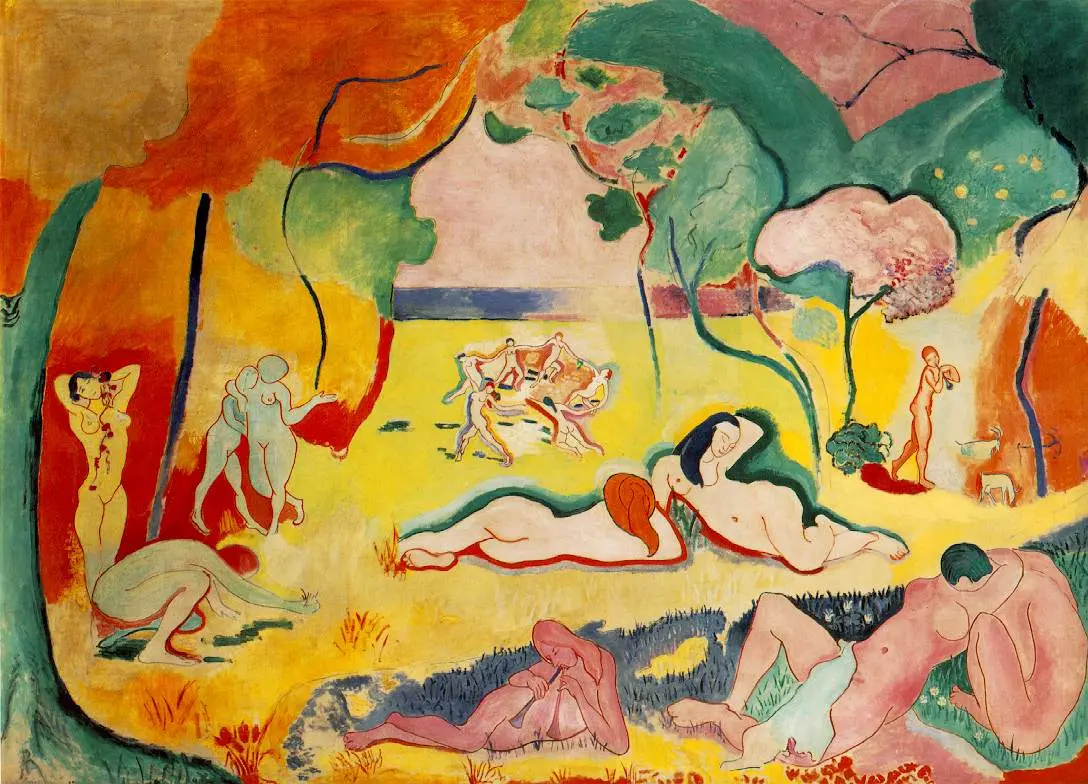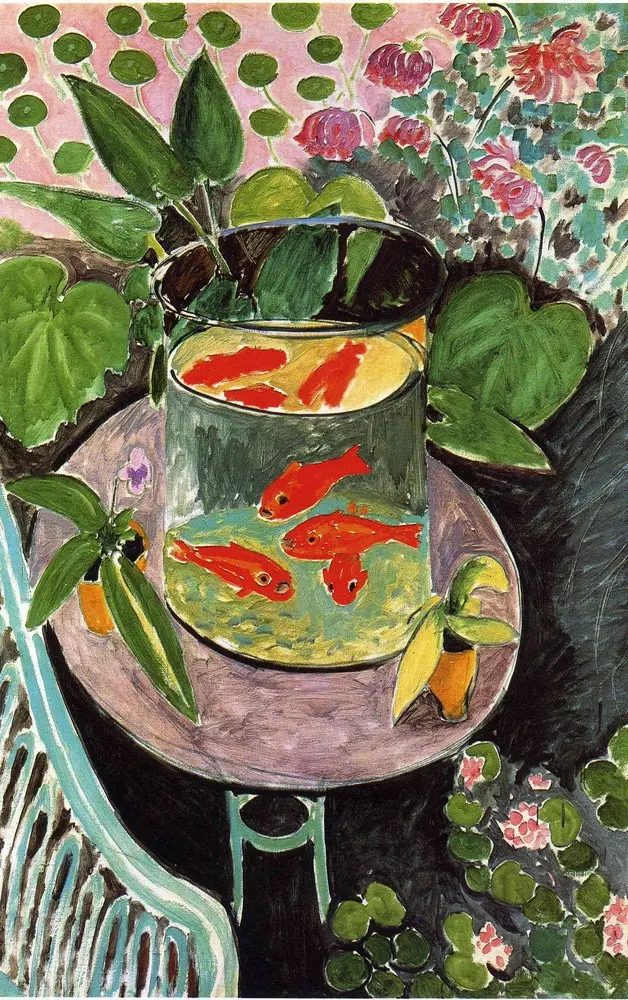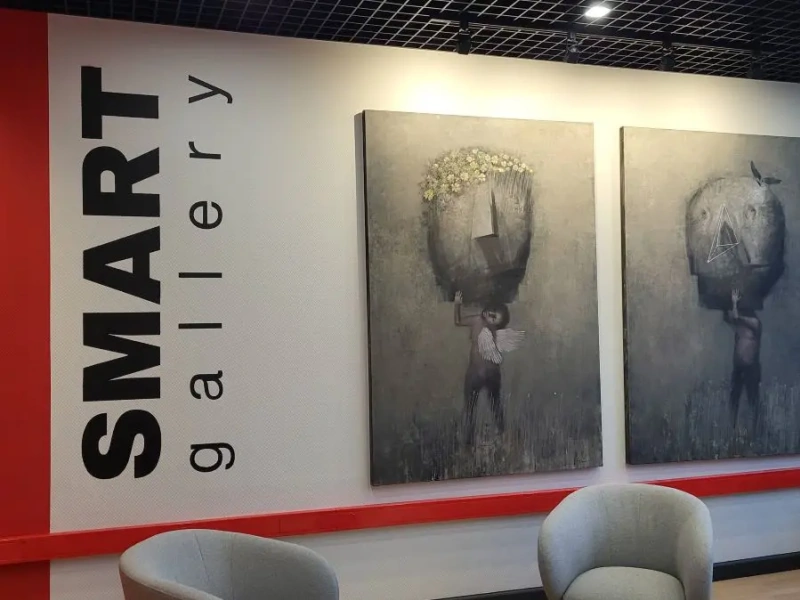Henri Matisse, one of the leaders of the Fauvism
movement ("the wild beasts" from French) is widely regarded as the greatest colorist of the twentieth century. He used color as the foundation for expressive, decorative, and often monumental paintings. Thanks to his quotes we can understand what art meant to him and how it changed his life.

I have always sought to be understood and, while I was taken to task by critics or colleagues, I thought they were right, assuming I had not been clear enough to be understood. This assumption allowed me to work my whole life without hatred and even without bitterness toward criticism, regardless of its source.
Hatred, rancor, and the spirit of vengeance are useless baggage to the artist. His road is difficult enough for him to cleanse his soul of everything which could make it more so.
What I dream of is an art of balance, of purity and serenity devoid of troubling or depressing subject matter — a soothing, calming influence on the mind, rather like a good armchair which provides relaxation from physical fatigue.
When I started to paint I felt transported into a kind of paradise… In everyday life I was usually bored and vexed… Starting to paint I felt gloriously free…
Hatred, rancor, and the spirit of vengeance are useless baggage to the artist. His road is difficult enough for him to cleanse his soul of everything which could make it more so.
What I dream of is an art of balance, of purity and serenity devoid of troubling or depressing subject matter — a soothing, calming influence on the mind, rather like a good armchair which provides relaxation from physical fatigue.
When I started to paint I felt transported into a kind of paradise… In everyday life I was usually bored and vexed… Starting to paint I felt gloriously free…
Goldfish
1912, 147×98 cm
An artist must possess Nature. He must identify himself with her rhythms, by effort that will prepare the mastery which will later enable him to express himself in his own language.
The future painter must feel what is useful for his development — drawing or even sculpture everything that will let him become one with Nature, identify himself with her, by entering into the things — which is what I call Nature — that arouse his feelings. I believe study by means of drawing is most essential. If drawing is of the Spirit and color of the Senses, you must draw first, to cultivate the spirit and to be able to lead color into spiritual paths.
There is nothing more difficult for a truly creative painter than to paint a rose, because before he can do so he has first to forget all the roses that were ever painted.
There are flowers everywhere for those who want to see them.
The future painter must feel what is useful for his development — drawing or even sculpture everything that will let him become one with Nature, identify himself with her, by entering into the things — which is what I call Nature — that arouse his feelings. I believe study by means of drawing is most essential. If drawing is of the Spirit and color of the Senses, you must draw first, to cultivate the spirit and to be able to lead color into spiritual paths.
There is nothing more difficult for a truly creative painter than to paint a rose, because before he can do so he has first to forget all the roses that were ever painted.
There are flowers everywhere for those who want to see them.
If upon a white canvas I jot down some sensations of blue, of green, of red — every new brush stroke diminishes the importance of the preceding ones. Suppose I set out to paint an interior. .If I paint a green near the red, if I paint in a yellow floor, there must still be between this green, this yellow, and the white of the canvas a relation that will be satisfactory to me. But these several tones mutually weaken one another. It is necessary, therefore, that the various elements that I use be so balanced that they do not destroy one another…
My choice of colors does not rest on any scientific theory; it is based on observation, on feeling, on the very nature of each experience. I… …merely try to find a color that will fit my sensation. There is an impelling proportion of tones that can induce me to change the shape of a figure or to transform my composition. Until I have achieved this proportion in all the parts of the composition I strive towards it and keep on working. Then a moment comes when every part has found its definite relationship, and from then on it would be impossible for me to add a stroke to my picture without having to paint it all over again.
Color was not given to us in order that we should imitate Nature. It was given to us so that we can express our emotions.
When I paint green, it doesn’t mean grass; when I paint blue, it doesn’t mean sky.
To paint an autumn landscape I will not try to remember what colors suit this season, I will only be inspired by the sensation that the season gives me; the icy clearness of the sour blue sky will express the season just as well as the tonalities of the leaves. My sensation itself may vary, the autumn may be soft and warm like a protracted summer or quite cool with a cold sky and lemon yellow trees that give a chilly impression and announce winter.
It is not enough to place colors, however beautiful, one beside the other; colors must also react on one another. Otherwise, you have cacophony.
My choice of colors does not rest on any scientific theory; it is based on observation, on feeling, on the very nature of each experience. I… …merely try to find a color that will fit my sensation. There is an impelling proportion of tones that can induce me to change the shape of a figure or to transform my composition. Until I have achieved this proportion in all the parts of the composition I strive towards it and keep on working. Then a moment comes when every part has found its definite relationship, and from then on it would be impossible for me to add a stroke to my picture without having to paint it all over again.
Color was not given to us in order that we should imitate Nature. It was given to us so that we can express our emotions.
When I paint green, it doesn’t mean grass; when I paint blue, it doesn’t mean sky.
To paint an autumn landscape I will not try to remember what colors suit this season, I will only be inspired by the sensation that the season gives me; the icy clearness of the sour blue sky will express the season just as well as the tonalities of the leaves. My sensation itself may vary, the autumn may be soft and warm like a protracted summer or quite cool with a cold sky and lemon yellow trees that give a chilly impression and announce winter.
It is not enough to place colors, however beautiful, one beside the other; colors must also react on one another. Otherwise, you have cacophony.

Henri Matisse. The dessert: harmony in red (The red room), 1908.
What interests me most is neither still life nor landscape
but the human figure. It is through it that I best succeed in expressing the nearly religious feeling that I have towards life. I do not insist upon the details of the face. I do not care to repeat them with anatomical exactness. Though I happen to have an Italian model whose appearance at first suggests nothing but a purely animal existence, yet I succeed in picking out among the lines of his face those which suggest that deep gravity which persists in every human being.
Suppose I want to paint a woman’s body: first of all I imbue it with grace and charm, but I know that I must give something more. I will condense the meaning of this body by seeking its essential lines. The charm will be less apparent at first glance, but it must eventually emerge from the new image which will have a broader meaning, one more fully human.
I try to condense the meaning of this body [of a woman] by drawing its essential lines. The charm will then become less apparent at first glance, but in the long run it will begin emanate from the new image. This image at the same time will be enriched by a wider meaning, a more comprehensively human one, while the charm, being less apparent, will not be its only characteristic. It will be merely one element in the general conception of the figure.
Suppose I want to paint a woman’s body: first of all I imbue it with grace and charm, but I know that I must give something more. I will condense the meaning of this body by seeking its essential lines. The charm will be less apparent at first glance, but it must eventually emerge from the new image which will have a broader meaning, one more fully human.
I try to condense the meaning of this body [of a woman] by drawing its essential lines. The charm will then become less apparent at first glance, but in the long run it will begin emanate from the new image. This image at the same time will be enriched by a wider meaning, a more comprehensively human one, while the charm, being less apparent, will not be its only characteristic. It will be merely one element in the general conception of the figure.
Woman in a purple coat
1937, 81×65.2 cm
It would be a mistake to ascribe this creative power to an inborn talent. In art, the genius creator is not just a gifted being, but a person who has succeeded in arranging for their appointed end, a complex of activities, of which the work is the outcome. The artist begins with a vision — a creative operation requiring an effort. Creativity takes courage.
Cezanne, you see, is a sort of God of painting.
I don’t paint things. I only paint the difference between things.
Color helps to express light, not the physical phenomenon, but the only light that really exists, that in the artist’s brain.
Cezanne, you see, is a sort of God of painting.
I don’t paint things. I only paint the difference between things.
Color helps to express light, not the physical phenomenon, but the only light that really exists, that in the artist’s brain.
Luxury, peace and pleasure
1904, 118×98 cm
The conversation
1909, 177×217 cm
Don’t try to be original. Be simple. Be good technically, and if there is something in you, it will come out.
The artists must see all things as if he were seeing them for the first time. All his life he must see as he did when he was a child.
Slowly I discovered the secret of my art. It consists of a meditation on nature, on the expression of a dream which is always inspired by reality. With more involvement and regularity, I learned to push each study in a certain direction. Little by little the notion that painting is a means of expression asserted itself, and that one can express the same thing in several ways. Exactitude is not truth, Delacroix liked to say.
All my efforts go into creating an art that can be understood by everyone.
The artists must see all things as if he were seeing them for the first time. All his life he must see as he did when he was a child.
Slowly I discovered the secret of my art. It consists of a meditation on nature, on the expression of a dream which is always inspired by reality. With more involvement and regularity, I learned to push each study in a certain direction. Little by little the notion that painting is a means of expression asserted itself, and that one can express the same thing in several ways. Exactitude is not truth, Delacroix liked to say.
All my efforts go into creating an art that can be understood by everyone.
Sleep
1940, 81×64 cm
Based on quotes of Henri Matisse "Notes of a Painter" (1908)
Title illustration: Henri Matisse. The joy of life. 1906, 241×175 cm
Title illustration: Henri Matisse. The joy of life. 1906, 241×175 cm






















